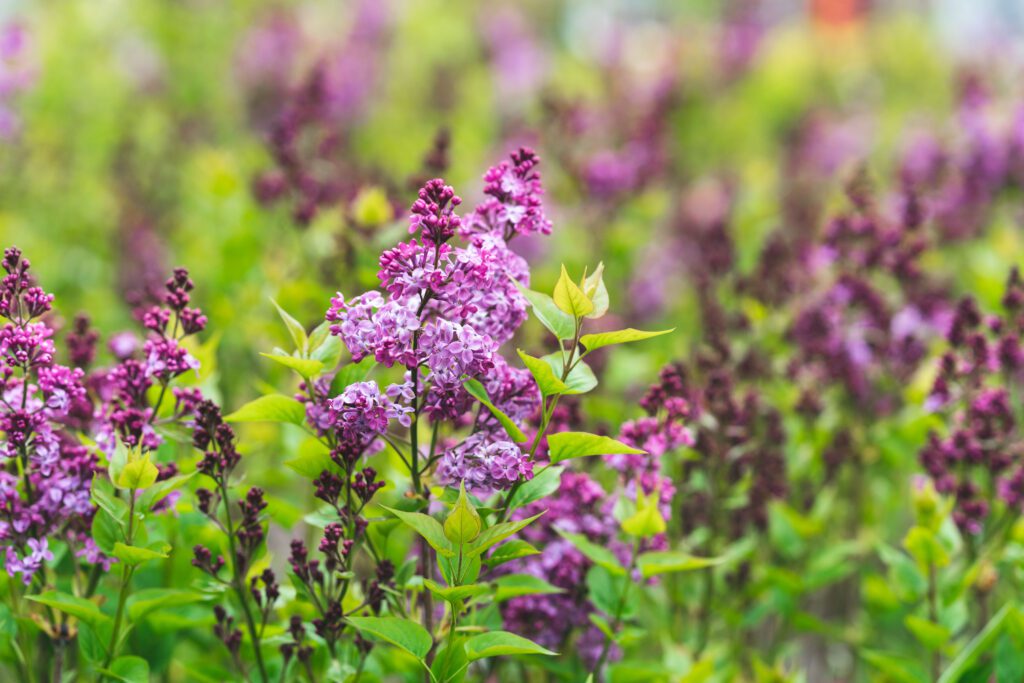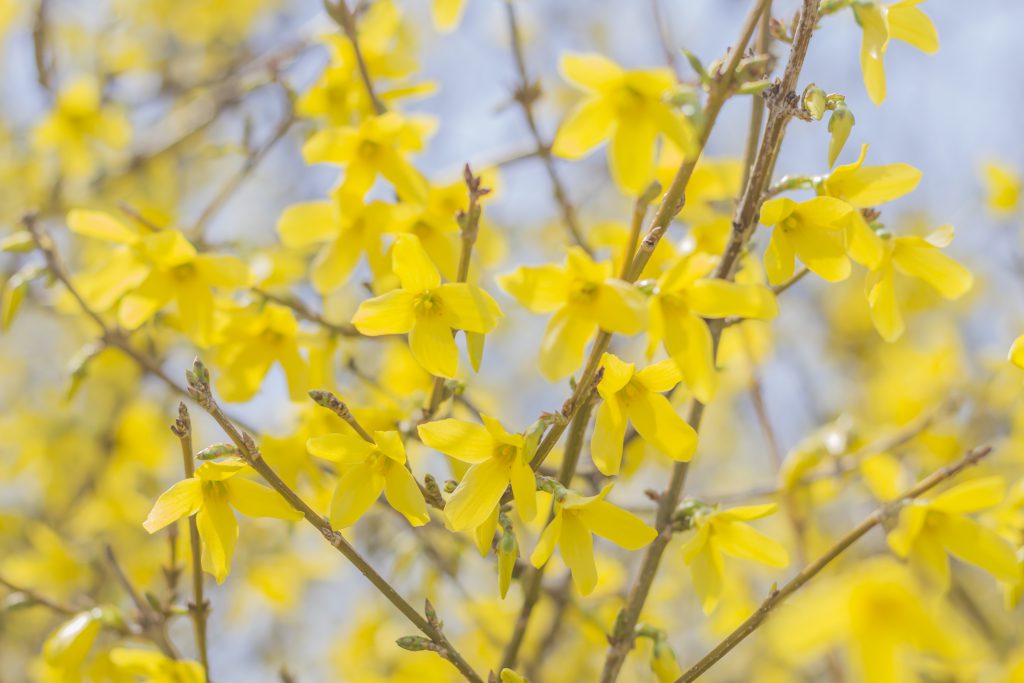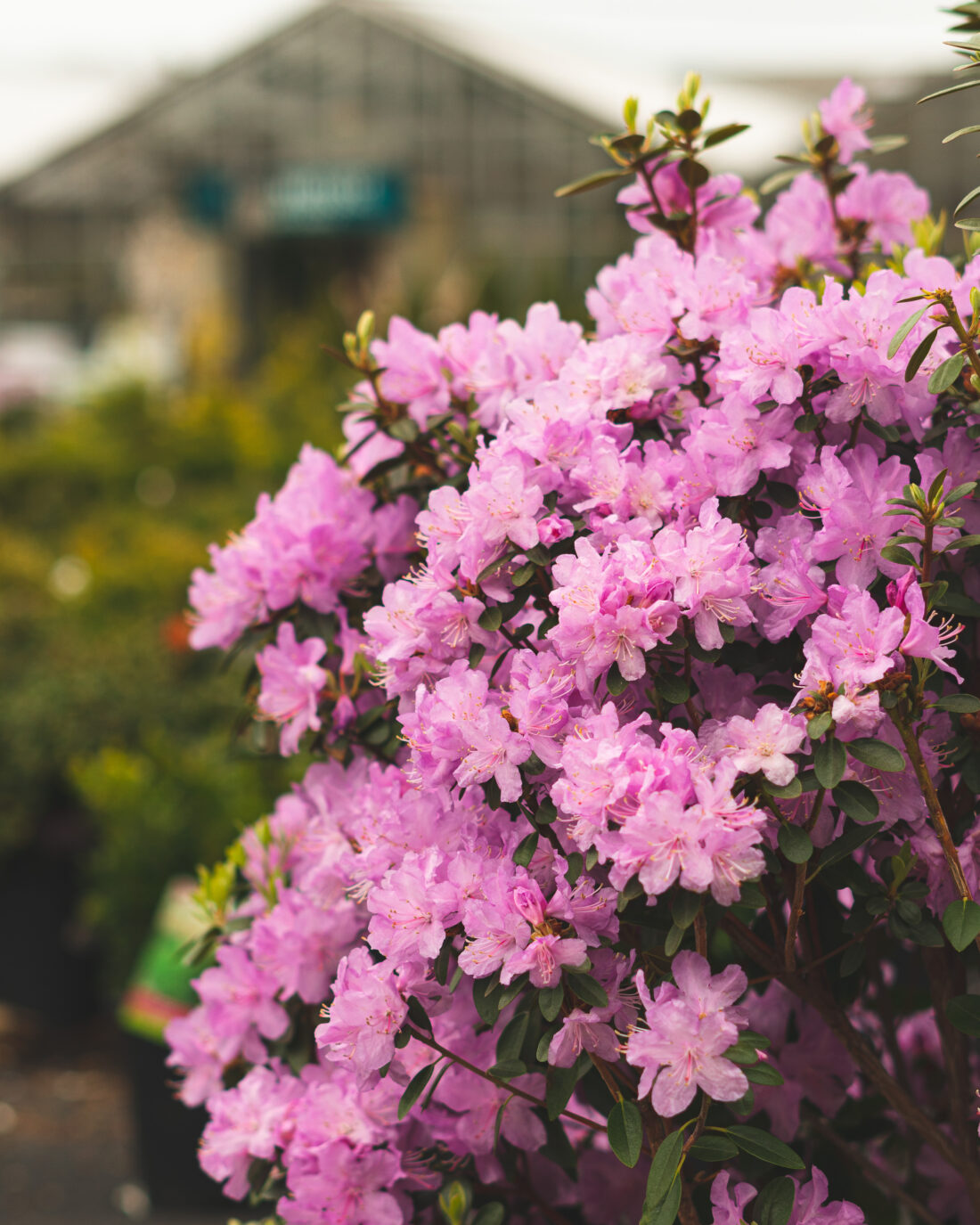June 16, 2023
Pruning Spring Blooming Shrubs
The spring flowers of Azaleas, Rhododendrons, Forsythia, Lilac and Viburnum are always so welcome after a long winter season. To ensure those beautiful blooms for next year’s spring, it is important to know when and how to prune them.
Spring flowering shrubs bloom on “old wood,” meaning growth that took place in the previous year. Another way to think of it is, the flowers you enjoyed this year were formed in the summer of last year. The window of time to do any pruning is after springtime flowering but before next year’s flower buds form. If you need to set a reminder in your calendar, a rule of thumb is to prune no later than July 4th. If you prune in late summer or fall, you will be removing next year’s flowers. It is generally recommended not to remove more than one-third of a shrub’s mass in one year. The shrub needs the remaining two-thirds leaf mass to maintain its vigor and health.
PRUNING MOST SPRING-BLOOMING SHRUBS
Pruning will control size, improve shape and encourage healthy branching. To shorten a branch, follow the branch down from the tip to the leaf you want to keep. Choose an outward facing leaf as this will direct the plant to make any future growth towards the outside, rather than encouraging further congestion in the inside of the plant. Make the cut one quarter inch above the topmost leaf you wish to keep.
To reduce the height of shrubs such as Forsythia, remove the tallest canes by cutting them out at ground level. Thin out any canes crowding the center to allow light and air to reach the interior. Remove canes growing in an unwanted or unruly direction.
Use this method to maintain your spring bloomers as needed. Read on for particular pruning methods that may become necessary if your lilacs or forsythia become truly overgrown.
PRUNING OVERGROWN LILACS
While the pruning principles above apply to a reasonably sized lilac, we often find ourselves with a shrub that is far too large. After all, don’t we want the flowers at a level where we can bury our faces into that heavenly fragrance?
The technique of “rejuvenation pruning” will bring an unruly lilac back to a manageable size. The preferred time for rejuvenation pruning is just before bud break in early spring (late March, early April) but it can be done any time in the spring or summer. In the first year, cut one-third of the oldest, most unproductive stems down to the ground. The next year, take out another third of the old stems, again at ground level. In the third year, remove the remainder of the old stems. New productive stems will quickly replace the old wood. While it takes three years to complete, the shrub stays attractive throughout the rejuvenation period. And after three years you have a brand new shrub. Maintenance pruning in the following years will keep flowers at a height where they can be best appreciated.

PRUNING OVERGROWN FORSYTHIA
Forsythia, which is a vigorous shrub, can be cut completely to the ground if it is wildly overgrown. New shoots will form and grow into stems. In the second year, select the strongest of the new canes and prune out the weaker ones. In the third season, begin an annual maintenance pruning regimen.

Need a fresh set of pruners to get you started? Check our selection in our online store here. Or stop by any of our 7 locations to find pruners best fit for your project!

